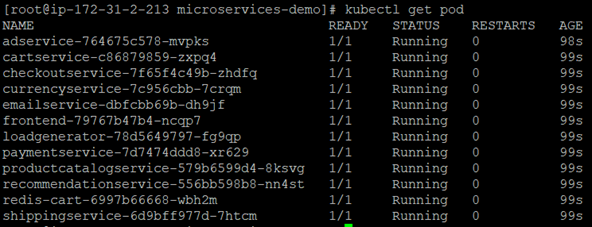|
Voiced by Amazon Polly |
Introduction to Cloud Agnostic
Developing systems not dependent on a specific provider is known as cloud agnostic. This is a little more contentious than cloud-native because it necessitates a substantial time investment. Because tools and infrastructure are designed with unique features that allow them to cross platforms, the initial costs are usually higher. Cloud agnostic is a subset of cloud-native because the goal of the native is to make applications work across multiple platforms and processes.
Pros
- Portability: Because programs operate independently of a platform, they can be moved anywhere.
- Consistent performance: Businesses can use a broader range of features and options, maximizing system performance.
- Avoiding lock-in: Portability ensures that systems are never locked into a provider whose terms or conditions may change.
Cons
- Misconceptions: People frequently misunderstand cloud agnostic. They may believe a single piece of code will work across all platforms, but they must rewrite it each time.
- Implementation challenges: It is not always possible because cloud agnostic must occur at the developer level.
Pioneers in Cloud Consulting & Migration Services
- Reduced infrastructural costs
- Accelerated application deployment
Why do applications need to be cloud agonistic?
There are several reasons why this is important:
- Flexibility: Cloud agnostic applications can be deployed on any cloud platform, allowing organizations to choose the cloud provider that best meets their needs in terms of cost, features, and geographic location.
- Portability: Cloud agnostic applications can be moved between cloud platforms without requiring significant modifications to the application. This can be important if an organization wants to switch cloud providers or if they want to use multiple cloud providers for different applications or services.
- Avoid vendor lock-in: Cloud agnostic applications can help organizations avoid being locked into a single cloud provider, which can limit their options and increase costs over time.
- Interoperability: Cloud agnostic applications can easily integrate with other applications and services, regardless of the cloud platform they are running on.
Ways to make your application Cloud Agonistic using Kubernetes
- Use Kubernetes as the orchestration platform: Kubernetes is an open-source container orchestration platform that provides a consistent way to deploy and manage containerized applications across different cloud providers. Using Kubernetes, you can abstract away the underlying infrastructure and make your application cloud-agnostic.
- Use cloud-agnostic storage: Kubernetes supports various storage solutions such as NFS, iSCSI, and Ceph, which can be used to make your application storage cloud-agnostic. Using these storage solutions ensures that your application can be deployed on any cloud provider without worrying about storage compatibility issues.
- Use cloud-agnostic networking: Kubernetes provides a software-defined networking layer that can be used to create a cloud-agnostic network for your application. By using Kubernetes networking, you can create a consistent network topology across different cloud providers.
- Use cloud-agnostic load balancing: Kubernetes supports various load balancing solutions such as the Kubernetes Service and Ingress resources. You can create a cloud-agnostic solution for your application using these load-balancing solutions.
- Use cloud-agnostic monitoring: Kubernetes supports various monitoring solutions, such as Prometheus and Grafana, which can monitor your application regardless of the cloud provider it is deployed on.
Sample application deployed on 2 clouds as Cloud Agonistic
In this lab, we need 2 cloud accounts. We will be doing this on AWS and Azure
On AWS console
Step-1: Create an EKS cluster on AWS and ssh into your instance.


Step-2: Go to https://github.com/GoogleCloudPlatform/microservices-demo
|
1 2 |
#git clone https://github.com/GoogleCloudPlatform/microservices-demo.git #cd microservices-demo |

|
1 |
#kubectl apply -f ./release/kubernetes-manifests.yaml |

|
1 |
#ls |

|
1 |
#kubectl get pod |

#kubectl get svc
|
1 |
#kubectl get svc |

Step-3: A load balancer will be created. In your AWS console, go to EC2–>load balancer

Step-4: Copy the DNS name and paste it into your web browser

On Azure portal
Step-1: Create an EKS cluster on Azure and connect to the cluster using cloud shell

Step-2: Configure the cloudshell
|
1 2 |
# az aks get-credentials --resource-group Swapnil-rs --name EKS-lab # kubectl get nodes |

Step-3: Go to https://github.com/GoogleCloudPlatform/microservices-demo
|
1 2 |
#git clone https://github.com/GoogleCloudPlatform/microservices-demo.git #cd microservices-demo |

|
1 |
#kubectl apply -f ./release/kubernetes-manifests.yaml |

|
1 |
#ls |

|
1 |
#kubectl get pod |

|
1 |
#kubectl get svc |

Step-4: A load balancer will be created. In your Azure console, go to Home->Load Balancing|Load Balancer->Select your load balancer

Step-5: Copy the External IP address and paste the name and paste in your web browser with the port number

Conclusion
A platform for container orchestration that is incredibly adaptable and versatile, Kubernetes may be installed in any cloud environment or on-premises data center. With this strategy, enterprises may use Kubernetes’ advantages without being restricted to a single cloud provider. Kubernetes offers a robust and scalable platform for delivering containerized applications, regardless of whether you select a managed Kubernetes service, a Kubernetes distribution, or self-manage the deployment. Regardless of the underlying infrastructure, enterprises may increase their application deployments’ agility, scalability, and reliability by using Kubernetes.
Freedom Month Sale — Discounts That Set You Free!
- Up to 80% OFF AWS Courses
- Up to 30% OFF Microsoft Certs
- Ends August 31
About CloudThat
CloudThat is an award-winning company and the first in India to offer cloud training and consulting services worldwide. As a Microsoft Solutions Partner, AWS Advanced Tier Training Partner, and Google Cloud Platform Partner, CloudThat has empowered over 850,000 professionals through 600+ cloud certifications winning global recognition for its training excellence including 20 MCT Trainers in Microsoft’s Global Top 100 and an impressive 12 awards in the last 8 years. CloudThat specializes in Cloud Migration, Data Platforms, DevOps, IoT, and cutting-edge technologies like Gen AI & AI/ML. It has delivered over 500 consulting projects for 250+ organizations in 30+ countries as it continues to empower professionals and enterprises to thrive in the digital-first world.
FAQs
1. What are services in Kubernetes?
ANS: – A cluster’s deployed collection of pods is logically abstracted as a Kubernetes service (which all perform the same function). As pods are transient, a service allows a collection of pods that perform related tasks (such as web services, image processing, etc.) to be given a name and distinctive IP address (clusterIP).
2. What are some benefits of using Kubernetes on a cloud-agnostic platform?
ANS: – Using Kubernetes on a cloud-agnostic platform allows organizations to avoid vendor lock-in, provides flexibility in choosing the cloud provider, and allows easier provider migration.
3. What are some challenges of deploying Kubernetes on a cloud-agnostic platform?
ANS: – Some challenges include increased complexity in deployment and management, the potential for compatibility issues between different cloud providers, and a lack of native integration with cloud provider services.
4. Can Kubernetes be self-managed on a cloud-agnostic platform?
ANS: – Yes, Kubernetes can be self-managed on a cloud-agnostic platform, but this requires more effort and expertise in managing the deployment and infrastructure.
5. What are some best practices for deploying Kubernetes on a cloud-agnostic platform?
ANS: – Best practices include using standard interfaces and APIs, avoiding cloud-specific features, designing for portability and flexibility, and using automation tools for deployment and management.

WRITTEN BY Swapnil Kumbar
Swapnil Kumbar is a Senior Research Associate at CloudThat with over 2.5 years of experience in DevOps. He specializes in AWS, Kubernetes, automation, and cloud-native technologies. Passionate about innovation and research, Swapnil focuses on building scalable infrastructure, optimizing deployments, and exploring emerging tools. In his free time, he actively contributes to knowledge sharing and community learning initiatives.


 Login
Login


 March 20, 2023
March 20, 2023 PREV
PREV










Comments